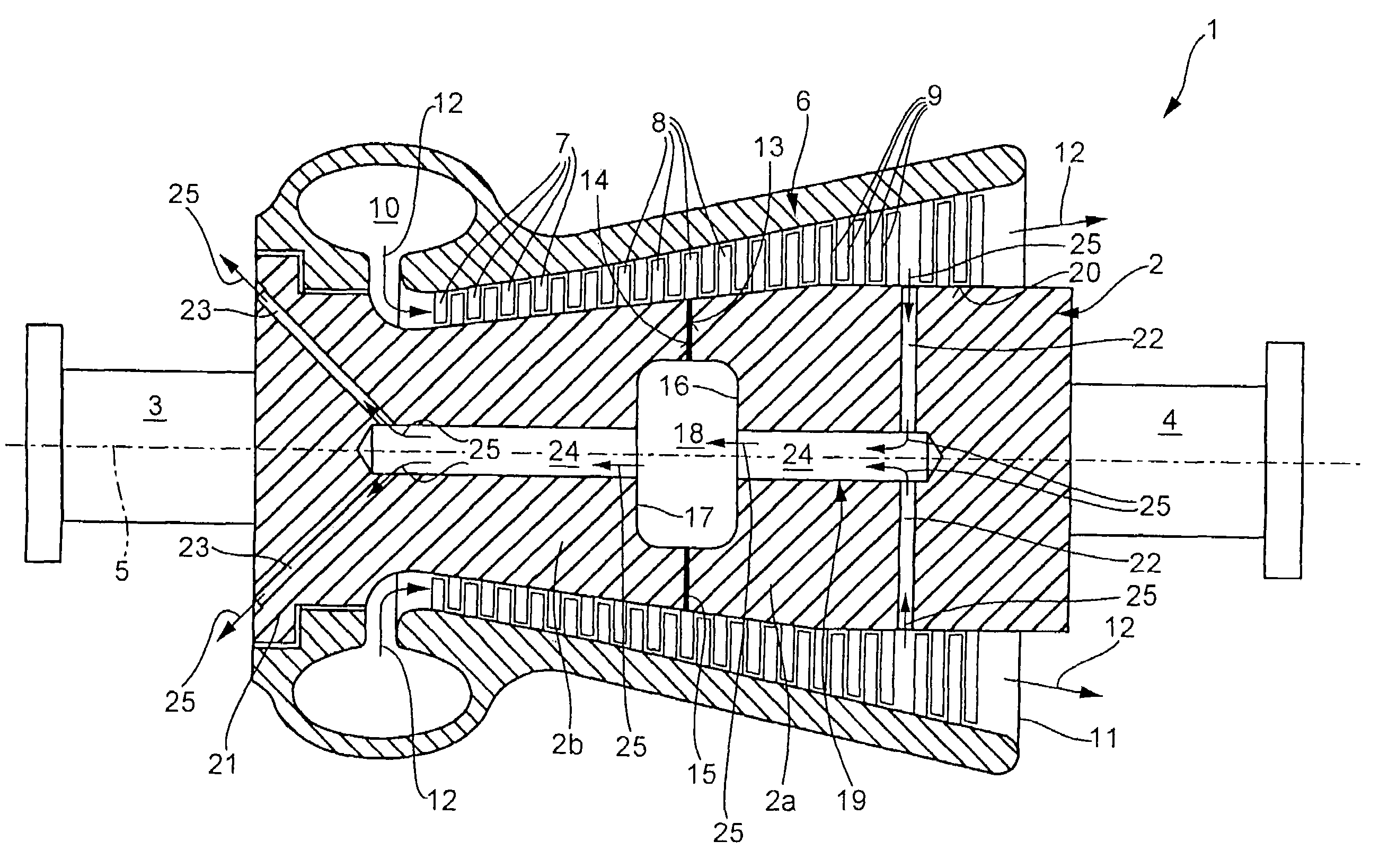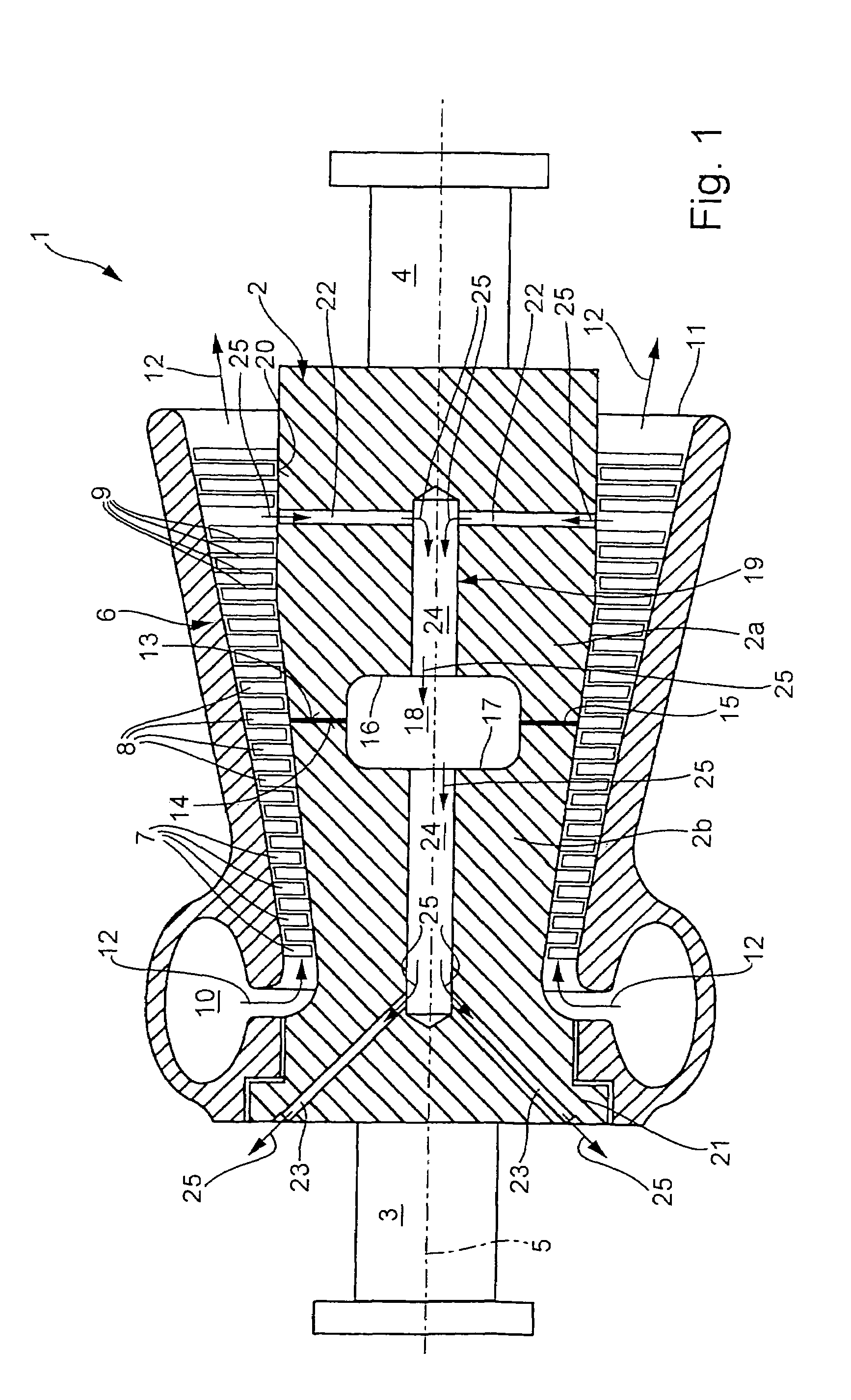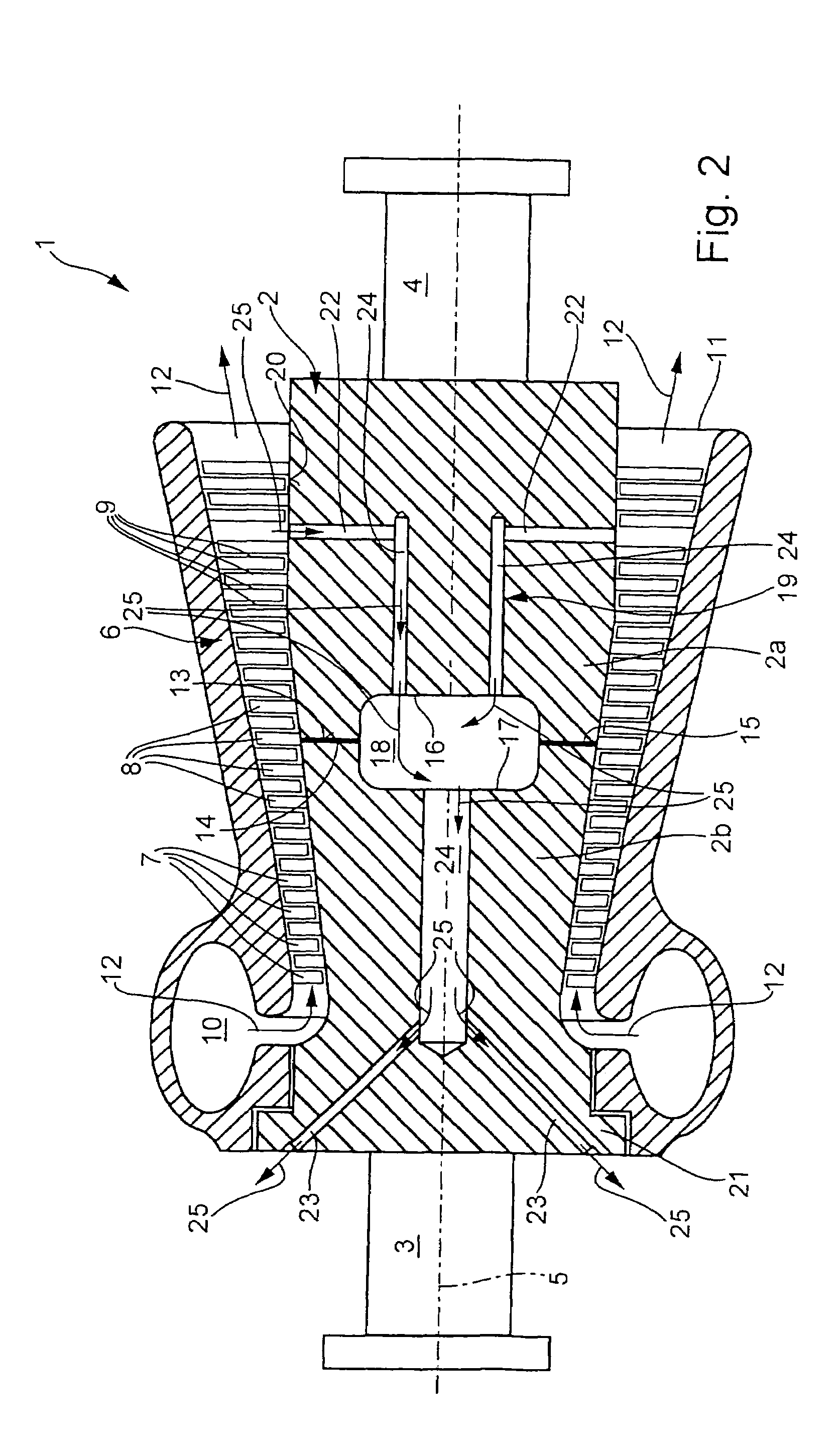Rotor for a steam turbine
a technology for steam turbines and rotors, which is applied in the direction of machines/engines, mechanical equipment, liquid fuel engines, etc., can solve the problems of frequent physical design limits, reduce the effort to provide the rotor-internal cooling channel system, and improve heat transfer. , the effect of reducing the effor
- Summary
- Abstract
- Description
- Claims
- Application Information
AI Technical Summary
Benefits of technology
Problems solved by technology
Method used
Image
Examples
Embodiment Construction
[0020]All of the figures illustrate only the inner housing and the rotor, but not the outer housing.
[0021]The invention will be explained in more detail in the following text with reference to exemplary embodiments and to FIGS. 1 to 9.
[0022]As is shown in FIG. 1, a steam turbine 1 has a rotor 2 which is mounted at its axial ends 3 and 4 such that it can rotate about a central rotation axis 5. The rotor 2 is arranged centrally in a housing 6, to which a number of stator blades 7 are fitted. Corresponding to this, the rotor 2 is fitted with a number of rotor blades 8, with the rotor blades 8 and the stator blades 7 forming, in pairs, the turbine stages 9 of the steam turbine 1. As is known, a steam turbine 1 operates with steam as the working medium, and this is also referred to as working steam. The housing 6 contains an inlet flow area 10, to which the compressed steam is supplied and from which the steam is passed to the first turbine stage 9 of the steam turbine 1. The expanded st...
PUM
 Login to View More
Login to View More Abstract
Description
Claims
Application Information
 Login to View More
Login to View More - R&D
- Intellectual Property
- Life Sciences
- Materials
- Tech Scout
- Unparalleled Data Quality
- Higher Quality Content
- 60% Fewer Hallucinations
Browse by: Latest US Patents, China's latest patents, Technical Efficacy Thesaurus, Application Domain, Technology Topic, Popular Technical Reports.
© 2025 PatSnap. All rights reserved.Legal|Privacy policy|Modern Slavery Act Transparency Statement|Sitemap|About US| Contact US: help@patsnap.com



